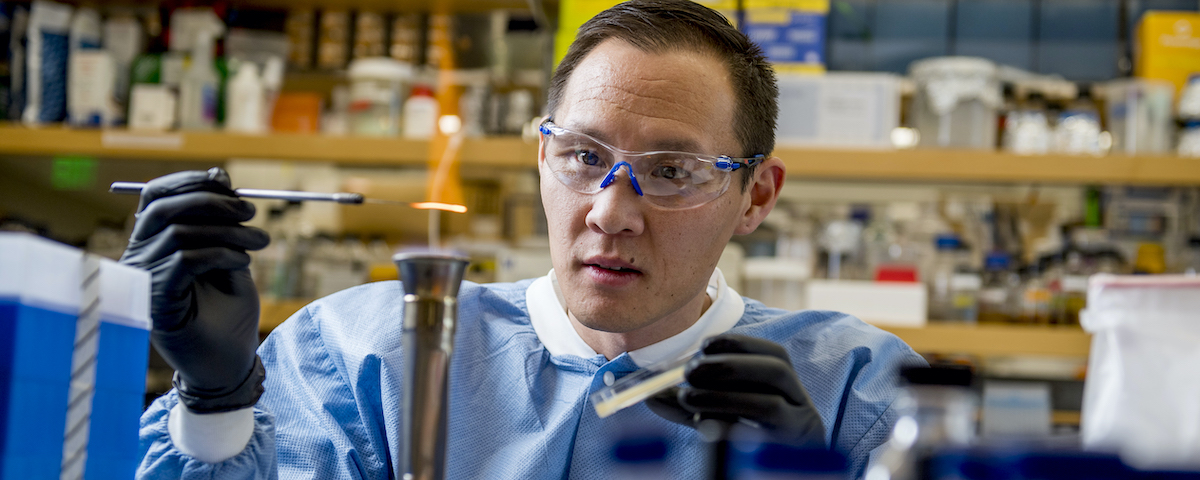A type of ultra-small bacteria called TM7 is common in many different environments, including the human mouth. Scientists believe it may play a role in gum disease. But in order to better understand TM7, researchers need to isolate it and study it in the lab, away from its human host.
Back in 2014, Dr. Xuesong He published a paper describing how he had cultured TM7 for the first time, growing it in a test tube outside the mouth. This was a major milestone, said He, Associate Member of Staff at the Forsyth Institute. Culturing TM7 is an important step toward understanding the human oral microbiome—the collection of bacteria that live in the human mouth.
In a new paper published recently in the journal Proceedings of the National Academy of Sciences, He and his colleague Dr. Batbileg Bor, a senior postdoctoral fellow in microbiology at Forsyth, describe a second milestone in their research on TM7.
TM7 is a parasite, meaning it lives in or on its host bacteria, and feeds on the host for nutrition. This makes it difficult for scientists to isolate and examine TM7. But in new research led by Bor and He, in collaboration with Dr. Jeffrey S. McLean, Associate Professor at University of Washington, the researchers developed a novel approach to studying TM7. The model system they developed could be applied to study other types of ultra-small bacteria, as well.
For the first time, Bor was able to isolate the ultra-small TM7 away from their host, count them individually, and then add them back to the host cultures. This allowed Bor to see the process of how TM7 infect and parasitize their hosts. Bor also for the first time reported the mechanism TM7 uses to establish a long-term parasitic relationship with its bacterial hosts. This may explain why TM7 bacteria persist for so long in the human mouth.
“This really lays the foundation to allow people to study other TM7 bacteria,” said He. TM7 is still relatively new to scientists, and it took Bor nearly three years to develop the novel approaches to studying them. Now that the model is developed, He said it will make a significant impact in the field. “Once you have the established assays, it‘s easier to go forward.”
Other collaborators on the study included Drs. Wenyuan Shi, Floyd E. Dewhirst and Lujia Cen from the Forsyth Institute; Kevin R. Foster from University of Oxford; and Thao T. To from University of Washington.
The work was supported in part by The National Institute of Dental and Craniofacial Research of the National Institutes of Health (NIH) under Awards 1R01DE023810, 1R01DE020102, 1R01DE026186, R37DE016937, DE024468, F32DE025548-01 and 5T90DE022734-04.

